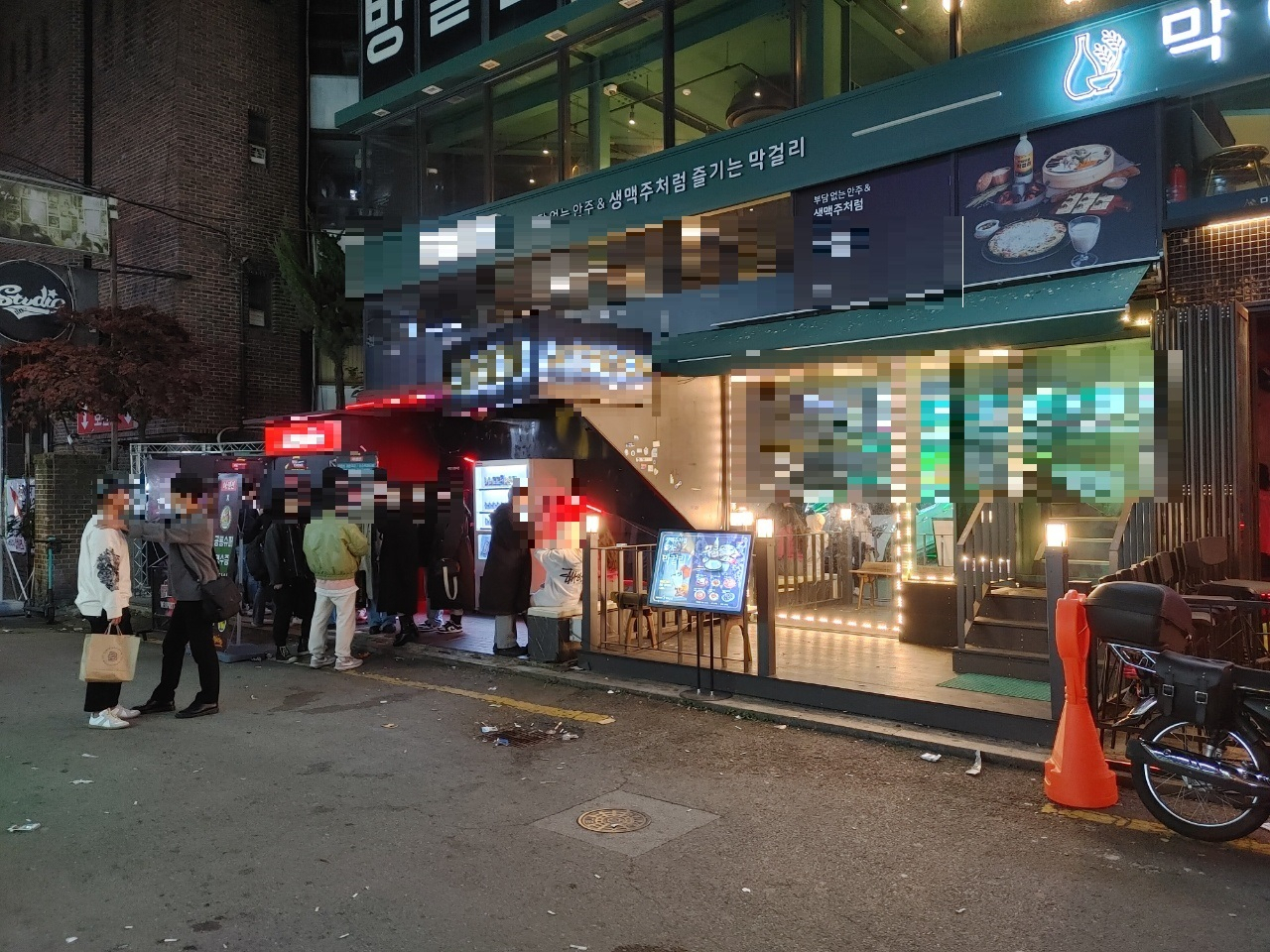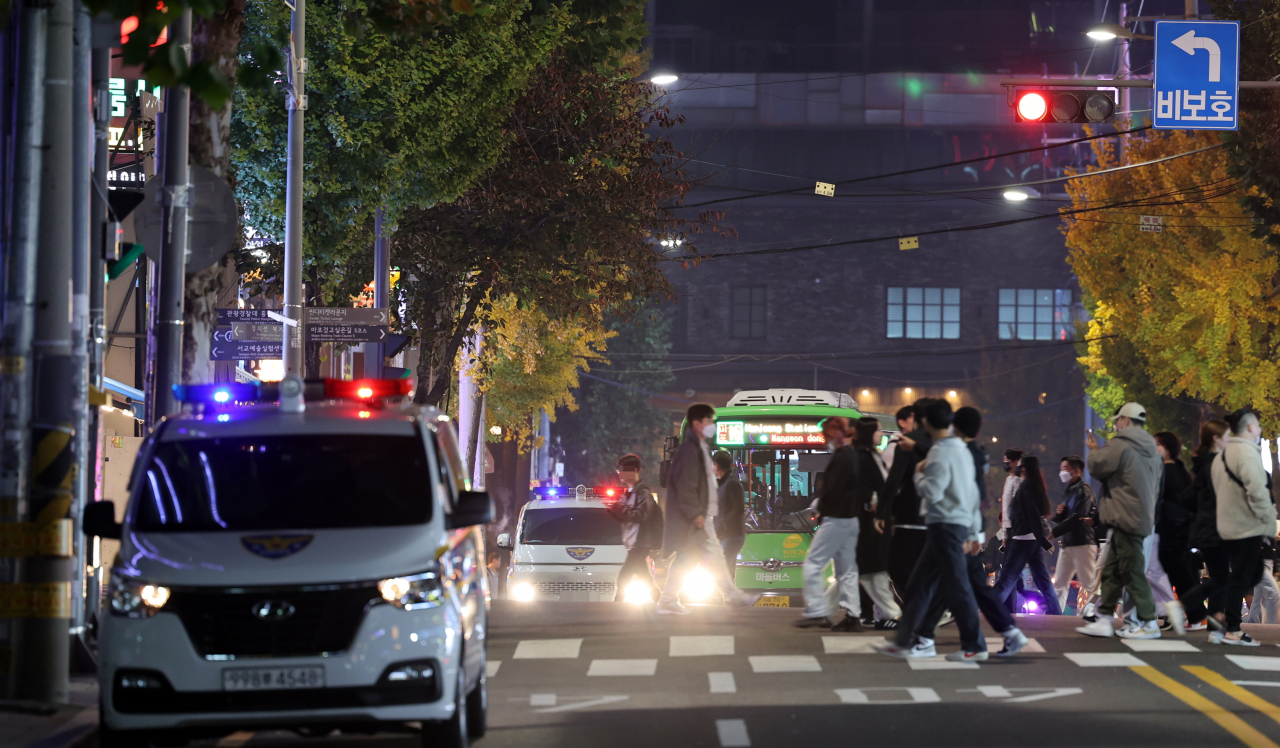Are Hongdae clubs and streets safe?
Several safety hazards evident in popular nightlife district
By Yoon Min-sikPublished : Dec. 6, 2022 - 16:03
Recently, South Korea suffered its worst Halloween nightmare when a catastrophic crowd crush on Oct. 29 claimed 158 lives, mostly young people simply out to have fun and enjoy the festivities.
In light of the tragedy, district offices around crowded areas and party districts in Seoul have rolled out some specific safety measures. Within the famous nightlife streets of Hongdae, located in Mapo-gu, red lines have been drawn on sloped streets to help warn pedestrians. And by the end of the month, there are plans to look into removing illegal structural additions that impede into walking areas. During Christmas, the Mapo-gu Office said it will deploy up to 60 officials and volunteers to help maintain safety in Hongdae.
Whether these reinforced safety measures will be effective remains to be seen. From the outside, Hongdae differs from Itaewon in that the streets are relatively wider, less steep and without narrow alleys creating bottlenecks. But overcrowding both inside the clubs and outside their doors on the street still poses real risks to safety in the Hongdae area.

Clubs jammed beyond capacity
The streets of Hongdae -- a Korean abbreviation for the nearby Hongik University -- are a vibrant place in the most literal way. One can find clubs packed on a Tuesday, with afterparties going late into the morning past sunrise.
At 6 a.m. Sunday, a long line had formed of partygoers waiting to get into a club that was open until 11 a.m.
But many clubs do not strictly keep to restrictions regarding how many people are allowed inside. South Korean law states the capacity of a facility is dictated by the size of the venue. So, more specifically, the calculation is determined by how big the area is in square meters and then divided by three.
"Club A" -- not its real name and in no way related to its actual name -- in the middle of Hongdae is 12 meters long and 13 meters wide, according to Naver Map, which should mean up to 52 people can enter the single-floor club. But the venue was observed to be full, at nearly twice the legal capacity.
The club had the legally required fire extinguisher in the corner, but it was blocked from the nearest employee by tables, customers' clothing and at least a few dozen people on their feet dancing the night, actually morning, away. Because the official capacity was under 100 people, sprinklers were not legally required and so it appeared none had been installed.
Several of the clubs observed in Hongdae had only one exit, and the few clubs with multiple exits typically kept only one unlocked. "Club B" nearer to Hongik University had two exits, but the back exit was locked.
A short conversation with one of the employees of "Club C" made it clear he was not well-acquainted with any sort of emergency evacuation plan, if one existed. Complimentary drinks are usually provided to club employees, leading to doubts as to their execution of an emergency plan.
In 2017, police conducted a raid of eight clubs in Hongdae, eight in Itaewon and one in Gangnam to check if the clubs were adhering to fire safety measures required by law. Violations were found in 10 of the 17.
Five years later, it remains unclear how safety measures have been improved upon -- or maintained.

Congested roads hint at potential trouble
The scene at the junction in front of the KT&G Sangsangmadang was near chaos. At around 3 a.m., a long line of cars kept the road completely jammed, and taxis parked where they should not be made congestion worse.
Between the traffic jams and illegally parked cars, there hardly seemed room for firetrucks to arrive in an emergency situation.
The slow-moving traffic did provide plenty of opportunities for jaywalkers, however, of which there was an abundance, and the majority seemed only semi-conscious. A young person was seen wobbling across the street on a red light. The reveler was grazed by a passing car, got up completely unfazed, and continued crossing the street, giggling.
Data suggests Itaewon was not the only overly crowded place in Seoul on that tragic night in late October.
According to a team from the Seoul National University Graduate School of Environmental Studies, there were 13 other roads -- including one in Hongdae -- that were "dangerously overcrowded," meaning more than six people per square-meter.
While Hongdae does not have the same alley-like streets as Itaewon, some roads are under 5 meters in width and over 30 meters in length.
While the main Hongdae nightlife street is included within the jurisdiction of the Hongik patrol division at Seoul Mapo Police Station, most nights officers are busy tending to people who have passed out drunk, or are quelling liquor-fueled fights.
From an onlooker's perspective, if proper consideration and safety measures are not taken -- and respected -- Hongdae could quickly turn from overcrowded clubs and streets into another nightmare.



















![[Today’s K-pop] Treasure to publish magazine for debut anniversary](http://res.heraldm.com/phpwas/restmb_idxmake.php?idx=642&simg=/content/image/2024/07/26/20240726050551_0.jpg&u=)